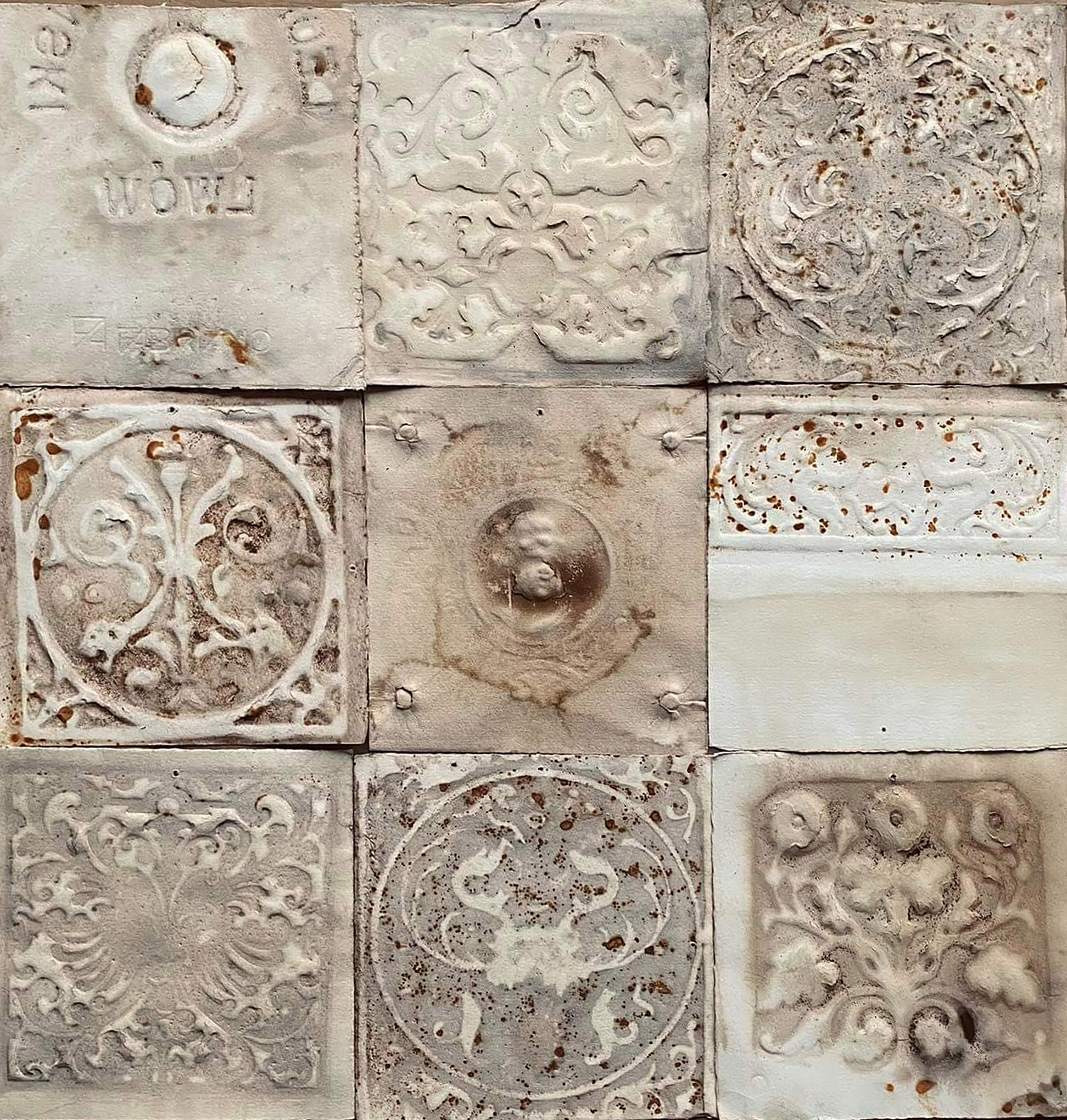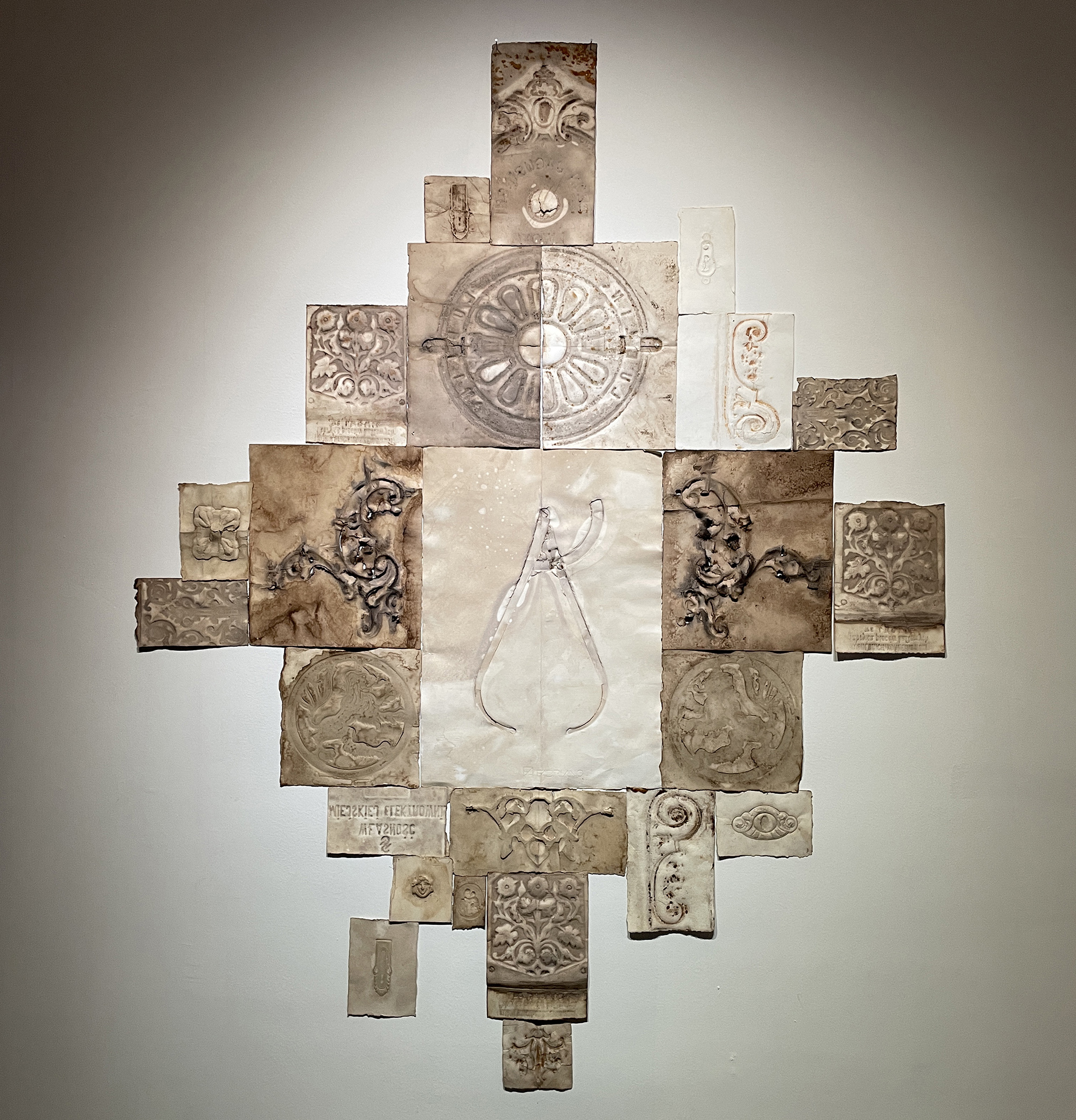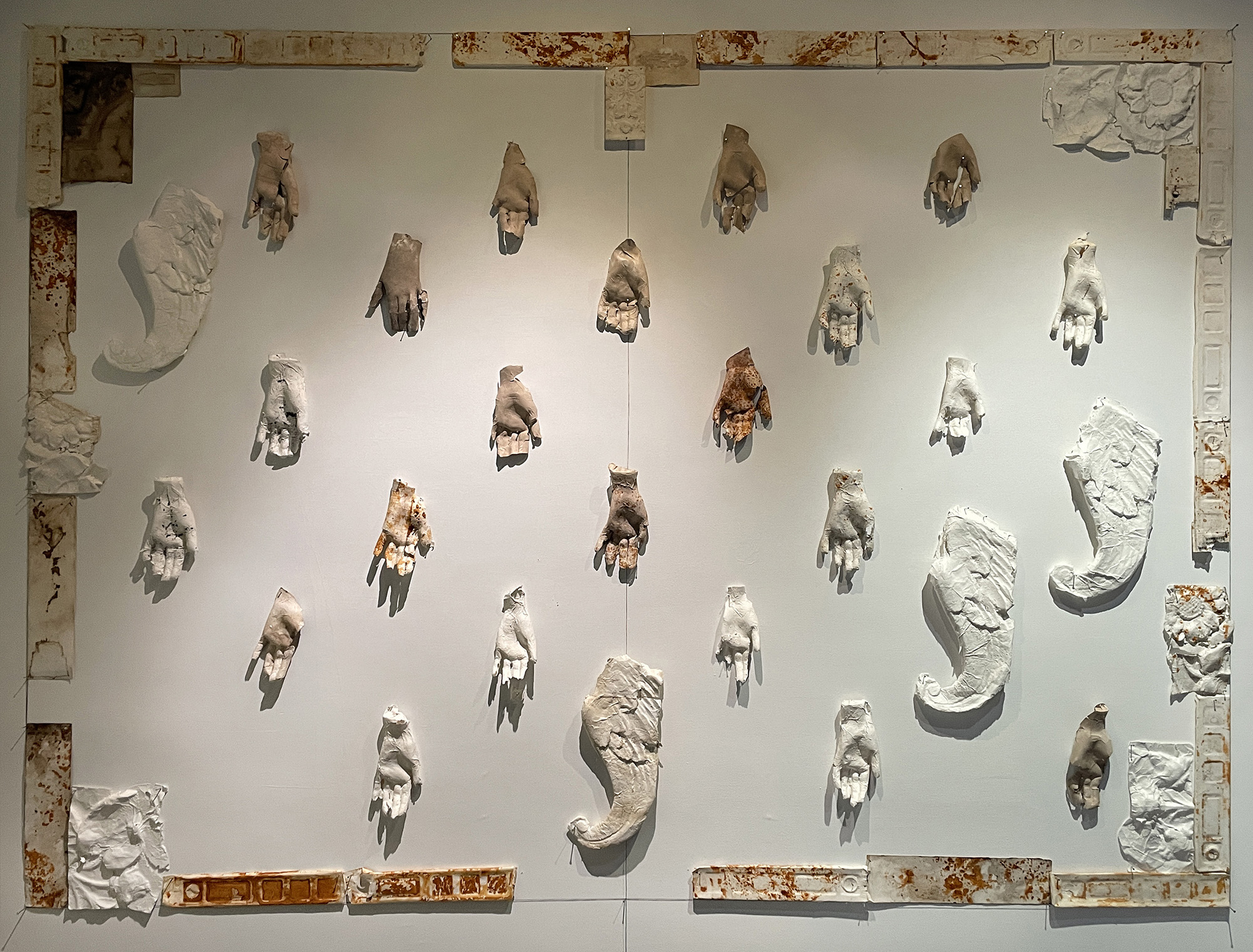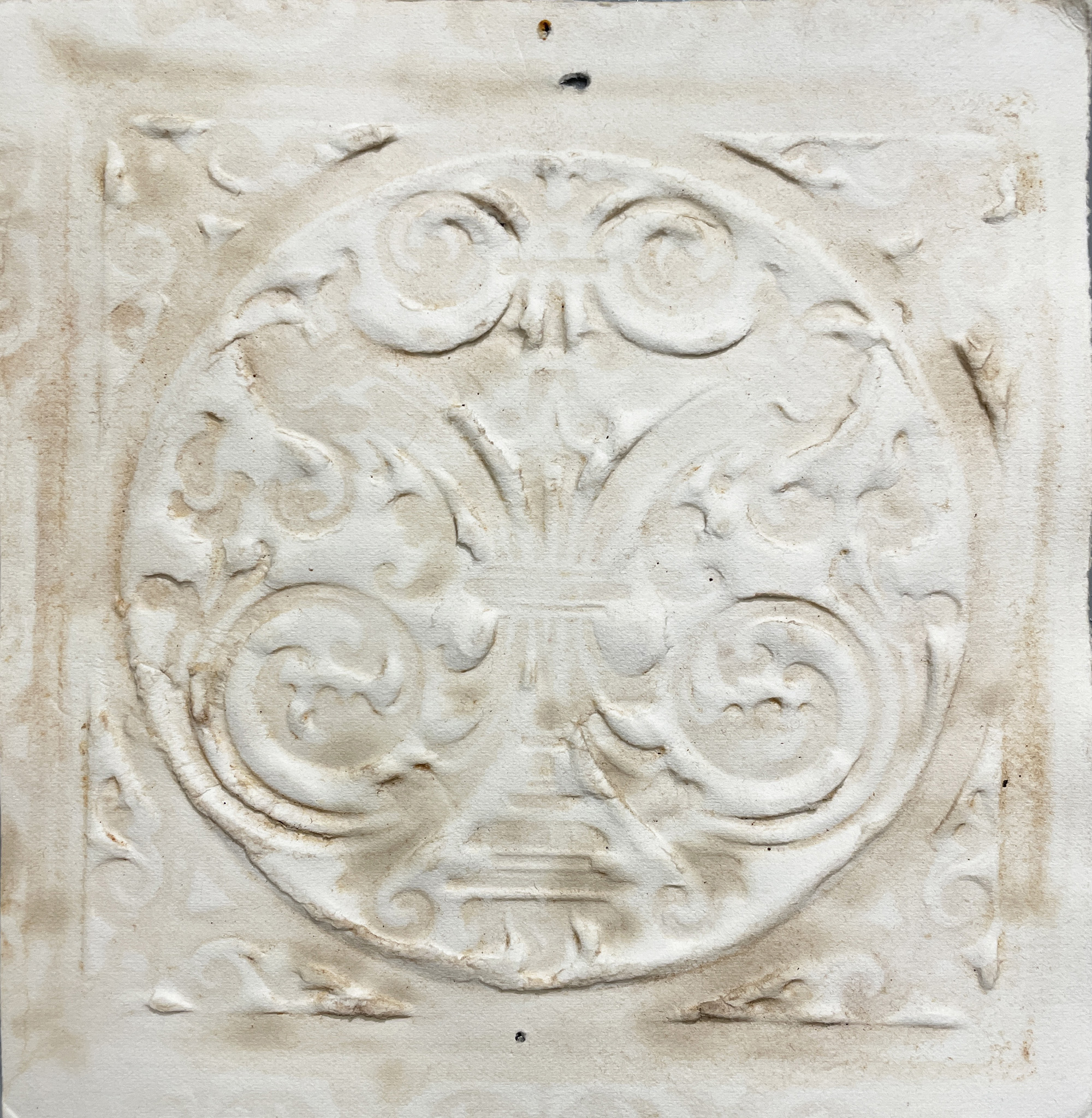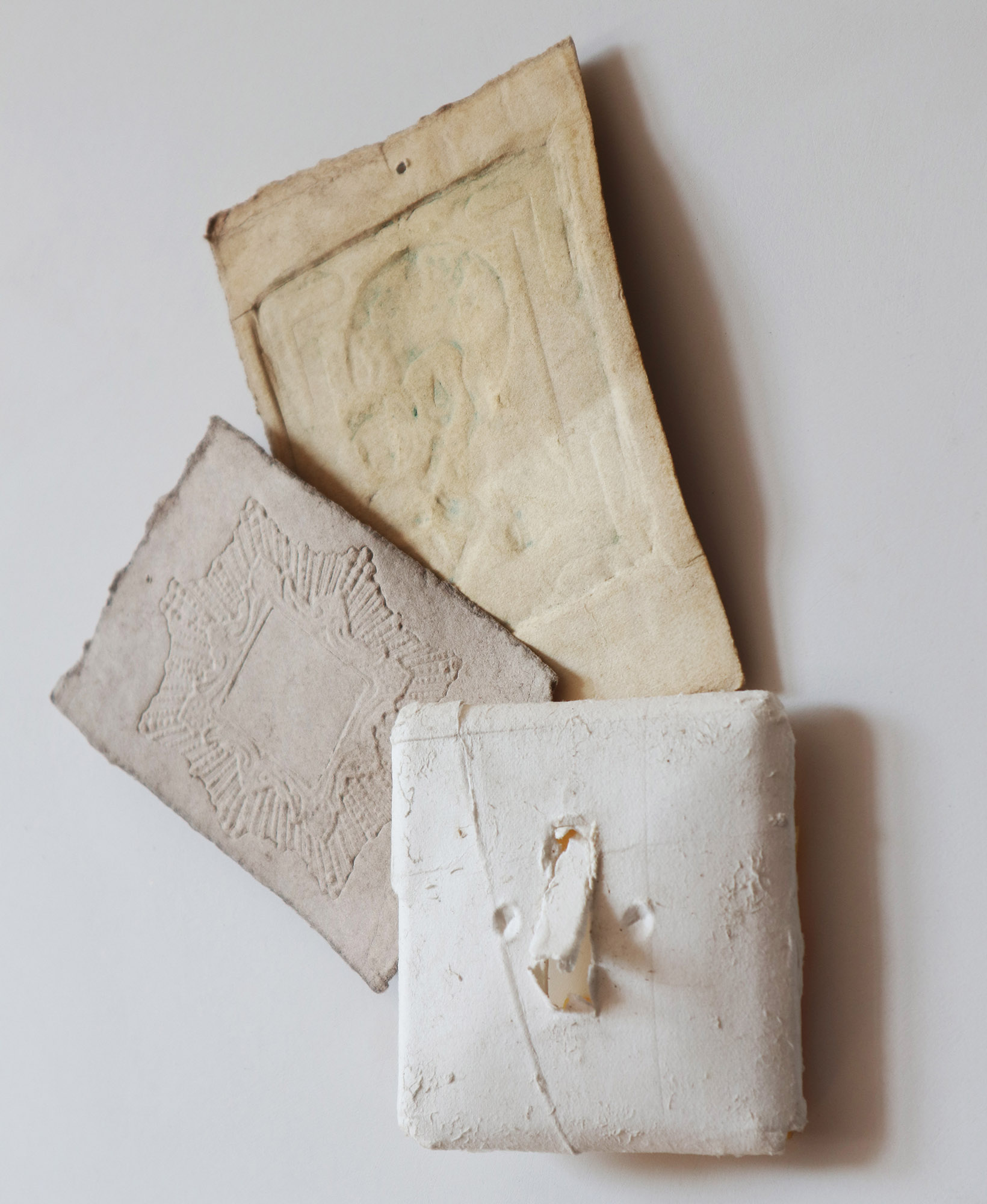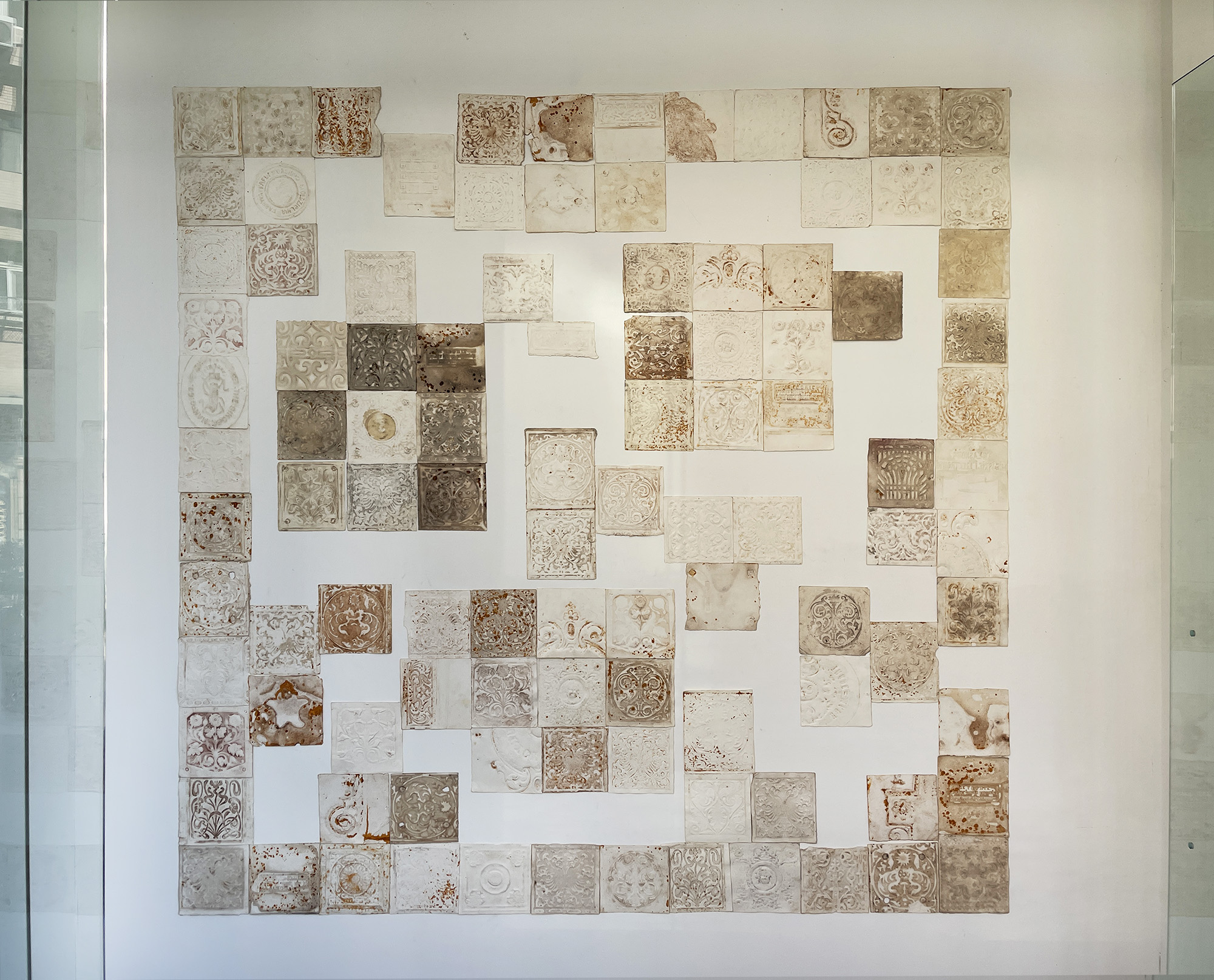Olha Kuzyura
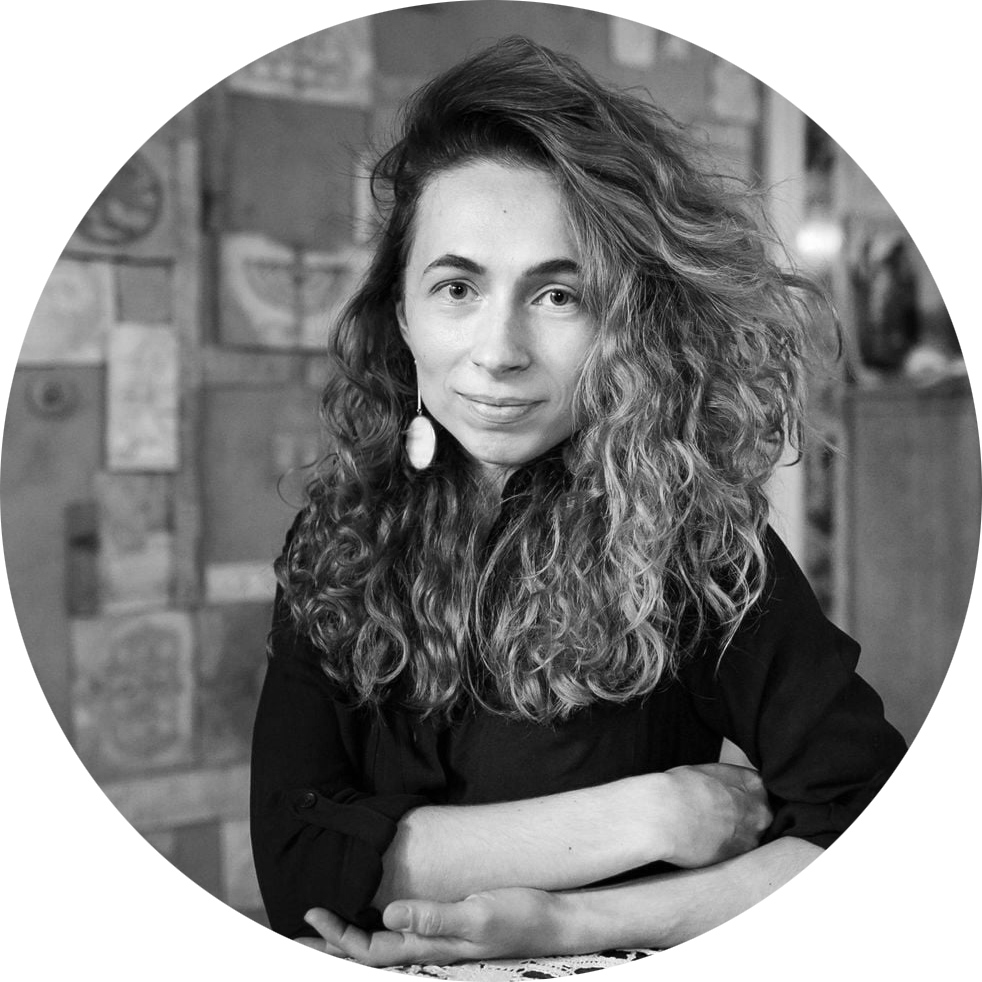
ARTIST STATEMENT
I’m a visual artist working in the form of experimental graphics, drawing, and installation, where in the center is a person in interaction with the material world. In my practice, I turn to the phenomenology of individual and collective memory, trauma through autobiographical motives. I form objects that appeal to the root of everyone’s identity, the temporal space that remains outside conscious memory.
Participatory practices occupy a special place in my work. I consider the process of co-creation of memory as a way to reconceptualize the collective self-relationship today. I create a space for the embodiment of a dialogue of details, elements of visual routine: sources of basic symbols that accompany a person throughout life and become key in the process of self-identification. The selected materials enhance the personal tactile contact with the work. They are carriers of information, a document that, despite its fragility, can give significance. This approach is capable of renewing the sense of spatial and bodily dimensions in our existence.
That’s how I’m forming a territory for meeting with myself and for synchronizing my experience with the outside world. Every step in my practice is about actualization, and therefore every time about a new approach to remembering the experience that shaped me.
STAY SAFE
Paper, as a carrier of information, is a document that, despite its fragility, can give significance. It is on paper that we certify our birth, baptism, and death.
Paper is capable of providing a spatial dimension to memory. It manifests the materiality of the immaterial in such an intense calmness. This material is burdened with sacred meanings and is capable of renewing the sense of spatial and bodily dimensions in our existence.
The installations themselves become vulnerable boundaries between the planes of the sacred and the mundane. I am investigating how a common denominator is formed in our collective memory to uniquely distinguish between these planes.
Individual objects and their aggregates are presented in installations as forms of home iconostasis. The iconostasis itself exists on the tangent of worlds. The barrier that separates us from the saint becomes an independent object of adoration. Home iconostasis in today’s everyday life is a spontaneous phenomenon that arose due to the obsessive desire of people to protect themselves and their home by creating a small sanctuary in it.
The project was developed during the first stage of the war launched by russia in Ukraine, until 2022. This is the time when the permanent concept of security was lost, and we could not determine the scale of the threat. Today, the places recorded in the project have accumulated new meanings. Simple everyday things and access to their home that Ukrainians lose every day.
LOST PRESENCE
Material objects evidencing the aesthetic and mental whimsicality of an era define a person and a reality that no longer exist. They allow us to explore the acute issue of collective memory. Against the background of such a variable geopolitical map of the world, there was a break in the continuity of our organic cultural evolution. The baggage of the intellectual, cultural and material heritage that was supposed to underpin our self-identification was irreversibly distorted.
As a certain wholeness, this symbiotic space gives people confidence and their place in reality. The generation of personalities was eliminated from our past, and the elements of the value paradigm which today should have been our benchmark were systematically destroyed. Therefore, it is especially difficult for us to protect the things created before us, for us, but not by us, and we continue to lose material and metaphysical …
The installation consists of imprints of fragments of lost interiors, destroyed buildings and border posts of states that no longer exist… each paper object is not only a death mask, but also a document that captures a person’s presence in a space. Processes in the modern world reduce us to a multicultural common denominator, deforming and eroding the boundaries of cultural, and, ultimately, national identity. We don’t feel this today is our because we lost our yesterday.
Exhibited in Germany, USA, Ukraine and Taiwan.
UNDER A SINGLE SKIN
Art installation, 2 parts, 120×155 cm and 260×190 cm, blind prints, paper, 2023
The project’s idea revolves around reconnecting with the body as a vessel of our experiences. By acknowledging memories and reality in terms of how they resonate on a physical level and finding them a new embodiment in the appropriate material, we undergo changes in our memory and self-perception.
In Ukraine, and later in Taiwan, I created a series of objects that form an installation. I work with the technique of blind printing on paper, allowing for dimensional imprints of various objects, preserving transient states on its surface. Paper absorbs contamination from the object, such as soot and rust. These layers are heavily associated with the layers of experience we feel basically on our skin right now: the anxiety and a sense of danger.
Paper has always been a carrier of memory and values. We trust it and the information it bears. Paper, literally a document on which we record the most important events like birth and death, is paradoxically physically impermanent.
But this fragility has taught us to love and care even more for everyone and everything around us. Among the surfaces from which imprints are taken are details of buildings that were already restored during the war. In times of such extensive destruction, restorers recreate material heritage for us, preserving so essential symbols to the future.
This art work becomes a painful commentary on the reality we face in Ukraine, but also a testament to the formation of a new way of collective memory. Being able to name one’s experience allows society to realize itself as under a single skin.
To create objects depicting human hands, I used paper that previously bore the imprints of surfaces from buildings at Treasure Hill Artist Village in Taipei and buildings from my home, Ukraine. This is a bridge, the gesture which reflects our desire to safeguard what is precious.
